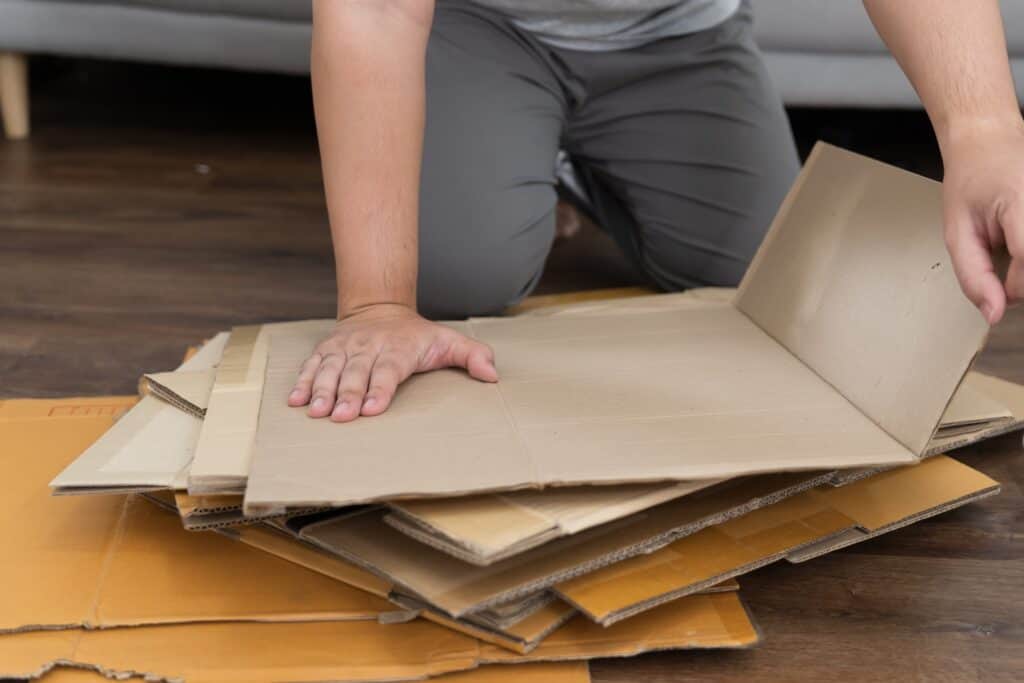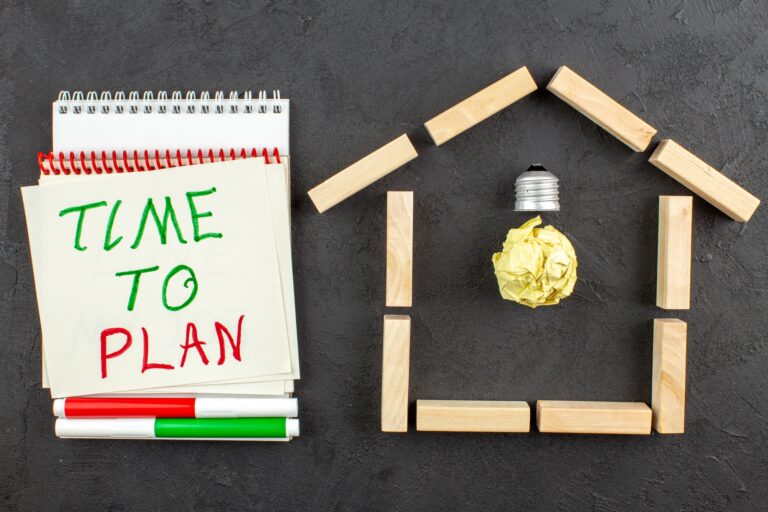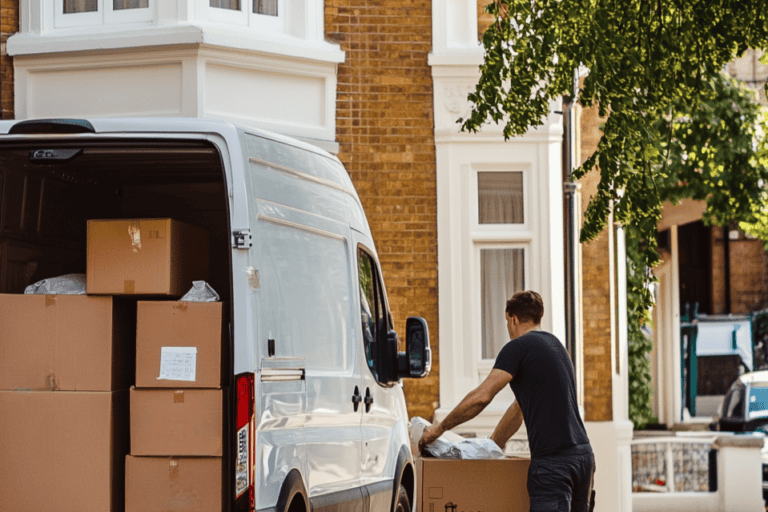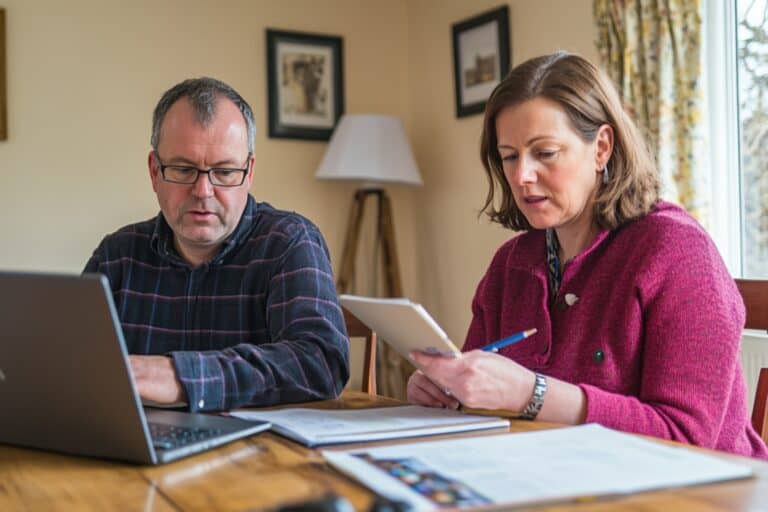Are you preparing for a home removal and wondering how to pack and unpack efficiently? Look no further! This comprehensive guide is packed with practical tips and tricks to help you declutter, organise, and manage your belongings, ensuring a smooth and stress-free moving process. From creating an essentials box to using the right packing materials and techniques, we cover everything you need to know to make your transition to a new home as seamless as possible.
Key Takeaways
- Declutter before packing to streamline the moving process, reduce stress, and save money on packing materials by eliminating unnecessary items.
- Organise your packing with a room-by-room checklist, prioritise must-have items for the essentials box, and ensure you pack efficiently by labelling boxes clearly.
- Use strategic loading and unpacking techniques to ensure a smooth transition to your new home, making the unpacking process more efficient and stress-free.
Sort and Declutter Before Packing
Before starting packing, sort and declutter your belongings. Early decluttering can make the moving experience less stressful and more manageable. Reducing the number of items to pack saves on materials and makes the process more efficient.
Start by sorting your items into three categories. These are ‘Keep’, ‘Donate’, and ‘Discard’. This method allows you to systematically go through your belongings and decide what you truly need. This helps you pack efficiently and provides an opportunity to donate or sell items you no longer need, benefiting others and reducing waste.
Set aside dedicated time for decluttering and break it down into manageable chunks, focusing on one room at a time. Involving your children can also be a great way to teach them the value of their belongings and develop emotional skills related to letting go. Taking before and after photos can serve as motivation and showcase the progress you’ve made.
Stock Up on Packing Supplies
Once you’ve decluttered, it’s time to gather your essential packing supplies. Having the right packing materials on hand is crucial for a smooth packing process. You’ll need sturdy boxes in various sizes, bubble wrap, packing tape, and markers for labelling. Don’t forget to stock up on packing paper and wardrobe boxes for your clothes and other delicate items.
To save money, look for free packing materials like old newspapers and boxes from local stores. You can also utilise existing items such as suitcases and storage boxes to pack your belongings, reducing the need for additional packing supplies.
Investing in quality packing supplies helps protect your belongings during the move. Though cutting costs might be tempting, sturdy boxes and proper packing materials will pay off by preventing damage to your items.
Plan Your Packing Process
A well-planned packing process ensures everything goes smoothly. Create a room-by-room packing checklist to manage the process effectively. This strategy helps you stay organised and ensures that no item is left behind.
Pack non-essential items first, as you’re less likely to need them before the move. Clearly label each box with its contents and the room it belongs to. This will simplify the unpacking process and help you find what you need quickly once you arrive at your new home.
A room-by-room strategy enhances organisation during the move. This approach allows you to focus on one area at a time, making the task feel less overwhelming. Clear labelling ensures all packed boxes end up in the right rooms, making unpacking easier and more efficient.

Prepare a First-Day Essentials Box
An essentials box is a lifesaver during a move. This box should contain items you use daily to minimise stress upon arrival. Think of it as your survival kit for the first day in your new home, ensuring you have all your boxes checked off.
Include toiletries, snacks, important documents, and a first aid kit in your essentials box. Don’t forget basic kitchenware, a change of clothes, and items for your children or pets. Packing these items in a separate box and keeping them in your vehicle ensures quick access to necessary items during the move.
Pack the essentials box last, preferably a few days before the move. A few toys or books can help keep children entertained during the move. Snacks and drinks are essential to keep your energy levels up on a moving day.
Handle Fragile Items with Care
Fragile items require special attention during a move. Use bubble wrap and packing paper to protect delicate items like glassware and electronics. Wrap each fragile item individually and pack them in sturdy boxes, clearly labelling them with care instructions.
Fill the bottom of cardboard boxes with soft materials and ensure that all empty spaces are cushioned to prevent shifting during transport. Avoid placing heavier items on top of fragile ones, and pack boxes last to minimise the risk during loading. These precautions help protect fragile items and ensure they arrive at your new home in one piece. Properly packing fragile items prevents broken belongings and additional stress during your move.
Take Apart Furniture Properly
Disassembling furniture is a crucial step in the moving process. It prevents damage during transport and saves space in the moving truck. Using furniture assembly instructions can significantly aid in the disassembly process, reducing the risk of damage.
Gather tools such as screwdrivers and Allen keys for effective disassembly. Label and securely store screws and small parts in bags to prevent loss during the move. This step ensures reassembling your furniture in your new home is a breeze.
Taking the time to disassemble furniture properly will protect your belongings and make the moving process smoother. This small effort pays off by preventing broken belongings and ensuring a stress-free move.
RECOMMENDATION
Properly disassembling furniture helps prevent damage and saves space during your move. Keep screws and small parts labelled and stored securely to make reassembly easy in your new home.
Optimise Box Space
Efficient box space use is key to a successful move. Rolling clothes instead of folding them maximises space and minimises the number of packing boxes needed. Fill any empty spaces with clothing or packing paper. This helps keep items secure and prevents them from shifting during transport. Here are some packing tips to consider. Use Tetris method to fit items snugly together and optimise box space.
Reinforce boxes with the ‘H’ taping technique to add strength and prevent accidental openings. Double-walled boxes are ideal for heavy items to prevent breakage during transit. Eco-friendly packing materials like biodegradable peanuts can fill gaps and protect your belongings. Maximising box space efficiency saves space and ensures your items arrive safely.
Load the Truck with a Strategy
Strategic truck loading ensures a safe and efficient move. Begin with the largest and heaviest items to ensure they are at the bottom. Position the heaviest boxes at the front of the moving truck. This arrangement provides stability during transport.
Place lighter boxes on top to prevent damage and maintain balance. Evenly distribute weight to aid vehicle control and minimise cargo shifting. Position large furniture pieces upright to save space and improve load distribution. Following these steps ensures your items are loaded securely and arrive at your new home without damage. Strategic loading ensures a successful move.
Unpack Must-Haves First
Upon arrival at your new home, start by unpacking the essentials box to settle in quickly. Next, prioritise unpacking kitchen essentials like major appliances and cookware. This step ensures a functional cooking space from day one. Set up beds and unpack linens in the bedrooms for comfort after the kitchen. Unpack bathroom essentials, including towels and toiletries, for quick accessibility.
Focusing on these must-haves first creates a comfortable living environment immediately. Unpacking essentials first helps manage daily needs right away, making the transition smoother. It’s a practical tip that ensures you can function comfortably from the start.

Stay Organised While Unpacking
Staying organised while unpacking ensures a stress-free move. Begin with essential items to manage daily needs immediately. Focus on unpacking kitchen items early to ensure a functional cooking space. Promptly dispose of packing materials to maintain a clean and organised space. Flatten and set aside empty boxes after unpacking.
Organising as you unpack saves time and reduces stress during the process. Unpack a single room at a time to prevent feeling overwhelmed. Creating an unpacking timeline makes the process more manageable and ensures a successful move.
Summary
Relocating to Enfield doesn’t have to be a daunting task. By following these packing and unpacking tips, you can ensure a smooth, stress-free move. From sorting and decluttering to handling fragile items with care, each step is designed to make your move more efficient and less overwhelming. Remember, preparation is key. With a well-planned approach, you can settle into your new home in Enfield with ease. Happy moving!
Frequently Asked Questions
How do you unpack a house efficiently?
To unpack your house efficiently, start by comparing your inventory list with your boxes, and create an unpacking plan focusing on essentials first. Tackle one room at a time and get your family involved to make the process enjoyable!
What is the fastest way to pack a house for moving?
The fastest way to pack a house is to focus on one room at a time, starting with those you use least, and pack similar items together while clearly labelling each box. This organised approach will make unpacking easier and keep you motivated throughout the process!
Why is decluttering important before packing?
Decluttering before packing is essential as it simplifies the packing process, saves you time and effort, and can even cut down on costs for packing supplies. Embrace the opportunity to travel light and make your move smoother!
What should be included in a first-day essentials box?
Be sure to pack toiletries, snacks, important documents, a first aid kit, basic kitchenware, a change of clothes, and necessities for kids or pets in your first-day essentials box. This thoughtful preparation will help you feel settled and ready for the day ahead!
How should fragile items be packed to prevent damage?
To prevent damage, wrap each fragile item individually in bubble wrap or packing paper, and use sturdy boxes with cushioning materials to keep everything secure. By taking these steps, you ensure your items arrive safely!







